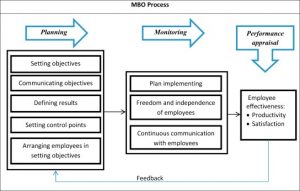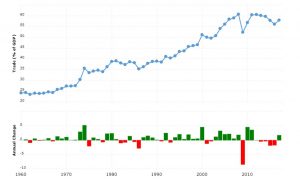2 The History of Management
Learning Objectives
The purpose of this chapter is to:
- 1) Give you an overview of the evolution of management thought and theory.
- 2) Provide an understanding of management in the context of the modern-day world in which we reside.
The History of Management
The concept of management has been around for thousands of years. According to Pindur, Rogers, and Kim (1995), elemental approaches to management go back at least 3000 years before the birth of Christ, a time in which records of business dealings were first recorded by Middle Eastern priests. Socrates, around 400 BC, stated that management was a competency distinctly separate from possessing technical skills and knowledge (Higgins, 1991). The Romans, famous for their legions of warriors led by Centurions, provided accountability through the hierarchy of authority. The Roman Catholic Church was organized along the lines of specific territories, a chain of command, and job descriptions. During the Middle Ages, a 1,000 year period roughly from 476 AD through 1450 AD, guilds, a collection of artisans and merchants provided goods, made by hand, ranging from bread to armor and swords for the Crusades. A hierarchy of control and power, similar to that of the Catholic Church, existed in which authority rested with the masters and trickled down to the journeymen and apprentices. These craftsmen were, in essence, small businesses producing products with varying degrees of quality, low rates of productivity, and little need for managerial control beyond that of the owner or master artisan.
The Industrial Revolution, a time from the late 1700s through the 1800s, was a period of great upheaval and massive change in the way people lived and worked. Before this time, most people made their living farming or working and resided in rural communities. With the invention of the steam engine, numerous innovations occurred, including the automated movement of coal from underground mines, powering factories that now mass-produced goods previously made by hand, and railroad locomotives that could move products and materials across nations in a timely and efficient manner. Factories needed workers who, in turn, required direction and organization. As these facilities became more substantial and productive, the need for managing and coordination became an essential factor. Think of Henry Ford, the man who developed a moving assembly line to produce his automobiles. In the early 1900s, cars were put together by craftsmen who would modify components to fit their product. With the advent of standardized parts in 1908, followed by Ford’s revolutionary assembly line introduced in 1913, the time required to build a Model T fell from days to just a few hours (Klaess, 2020). From a managerial standpoint, skilled craftsmen were no longer necessary to build automobiles. The use of lower-cost labor and the increased production yielded by moving production lines called for the need to guide and manage these massive operations (Wilson, 2015). To take advantage of new technologies, a different approach to organizational structure and management was required.
The Scientific Era – Measuring Human Capital
With the emergence of new technologies came demands for increased productivity and efficiency. The desire to understand how to best conduct business centered on the idea of work processes. That is, managers wanted to study how the work was performed and the impact on productivity. The idea was to optimize the way the work was done. One of the chief architects of measuring human output was Frederick Taylor. Taylor felt that increasing efficiency and reducing costs were the primary objectives of management. Taylor’s theories centered on a formula that calculated the number of units produced in a specific time frame (DiFranceso and Berman, 2000). Taylor conducted time studies to determine how many units could be produced by a worker in so many minutes. He used a stopwatch, weight measurement scale, and tape measure to compute how far materials moved and how many steps workers undertook in the completion of their tasks (Wren and Bedeian, 2009). Examine the image below – one can imagine Frederick Taylor standing nearby, measuring just how many steps were required by each worker to hoist a sheet of metal from the pile, walk it to the machine, perform the task, and repeat, countless times a day. Beyond Taylor, other management theorists including Frank and Lilian Gilbreth, Harrington Emerson, and others expanded the concept of management reasoning with the goal of efficiency and consistency, all in the name of optimizing output. It made little difference whether the organization manufactured automobiles, mined coal, or made steel, the most efficient use of labor to maximize productivity was the goal.

The necessity to manage not just worker output but to link the entire organization toward a common objective began to emerge. Management, out of necessity, had to organize multiple complex processes for increasingly large industries. Henri Fayol, a Frenchman, is credited with developing the management concepts of planning, organizing, coordination, command, and control (Fayol, 1949), which were the precursors of today’s four basic management principles of planning, organizing, leading, and controlling.
Employees and the Organization
With the increased demand for production brought about by scientific measurement, conflict between labor and management was inevitable. The personnel department, forerunner of today’s human resources department, emerged as a method to slow down the demand for unions, initiate training programs to reduce employee turnover, and to acknowledge workers’ needs beyond the factory floor. The idea that to increase productivity, management should factor the needs of their employees by developing work that was interesting and rewarding burst on the scene (Nixon, 2003) and began to be part of management thinking. Numerous management theorists were starting to consider the human factor. Two giants credited with moving management thought in the direction of understanding worker needs were Douglas McGregor and Frederick Herzberg. McGregor’s Theory X factor was management’s assumption that workers disliked work, were lazy, lacked self-motivation, and therefore had to be persuaded by threats, punishment, or intimidation to exert the appropriate effort. His Theory Y factor was the opposite. McGregor felt that it was management’s job to develop work that gave the employees a feeling of self-actualization and worth. He argued that with more enlightened management practices, including providing clear goals to the employees and giving them the freedom to achieve those goals, the organization’s objectives and those of the employees could simultaneously be achieved (Koplelman, Prottas, & Davis, 2008).
Frederick Herzberg added considerably to management thinking on employee behavior with his theory of worker motivation. Herzberg contended that most management driven motivational efforts, including increased wages, better benefits, and more vacation time, ultimately failed because while they may reduce certain factors of job dissatisfaction (the things workers disliked about their jobs), they did not increase job satisfaction. Herzberg felt that these were two distinctly different management problems. Job satisfaction flowed from a sense of achievement, the work itself, a feeling of accomplishment, a chance for growth, and additional responsibility (Herzberg, 1968). One enduring outcome of Herzberg’s work was the idea that management could have a positive influence on employee job satisfaction, which, in turn, helped to achieve the organization’s goals and objectives.
The concept behind McGregor, Herzberg, and a host of other management theorists was to achieve managerial effectiveness by utilizing people more effectively. Previous management theories regarding employee motivation (thought to be directly correlated to increased productivity) emphasized control, specialized jobs, and gave little thought to employees’ intrinsic needs. Insights that considered the human factor by utilizing theories from psychology now became part of management thinking. Organizational changes suggested by management thinkers who saw a direct connection between improved work design, self-actualization, and challenging work began to take hold in more enlightened management theory.
The Modern Era
Koontz and O’Donnell (1955) defined management as “the function of getting things done through others (p. 3). One commanding figure stood above all others and is considered the father of modern management (Edersheim, (2007). That individual was Peter Drucker. Drucker, an author, educator, and management consultant is widely credited with developing the concept of Managing By Objective or MBO (Wren & Bedeian, 2009). Management by Objective is the process of defining specific objectives necessary to achieve the organization’s goals. The beauty of the MBO concept was that it provided employees a clear view of their organization’s objectives and defined their individual responsibilities. For example, let’s examine a company’s sales department. One of the firm’s organizational goals might be to grow sales (sometimes referred to as revenue) by 5% the next fiscal year. The first step, in consultation with the appropriate people in the sales department, would be to determine if that 5% goal is realistic and attainable. If so, the 5% sales growth objective is shared with the entire sales department and individuals are assigned specific targets. Let’s assume this is a regional firm that has seven sales representatives. Each sales rep is charged with a specific goal that, when combined with their colleagues, rolls up to the 5% sales increase. The role of management is now to support, monitor, and evaluate performance. Should a problem arise, it is management’s responsibility to take corrective action. If the 5% sales objective is met or exceeded, rewards can be shared. This MBO cycle applies to every department within an organization, large or small, and never-ending.
The MBO Process

Drucker’s contributions to modern management thinking went far beyond the MBO concept. Throughout his long life, Drucker argued that the singular role of business was to create a customer and that marketing and innovation were its two essential functions. Consider the Apple iPhone. From that single innovation came thousands of jobs in manufacturing plants, iPhone sales in stores around the globe, and profits returned to Apple, enabling them to continue the innovation process. Another lasting Drucker observation was that too many businesses failed to ask the question “what business are we in?” (Drucker, 2008, p. 103). On more than one occasion, a company has faltered, even gone out of business, after failing to recognize that their industry was changing or trying to expand into new markets beyond their core competency. Consider the fate of Blockbuster, Kodak, Blackberry, or Yahoo.
Management theories continued to evolve with additional concepts being put forth by other innovative thinkers. Henry Mintzberg is remembered for blowing holes in the idea that managers were iconic individuals lounging in their offices, sitting back and contemplating big-picture ideas. Mintzberg observed that management was hard work. Managers were on the move attending meetings, managing crises, and interacting with internal and external contacts. Further, depending on the exact nature of their role, managers fulfilled multiple duties including that of spokesperson, leader, resource allocator, and negotiator (Mintzberg, 1973). In the 1970s, Tom Peters and Robert Waterman traveled the globe exploring the current best management practices of the time. Their book, In Search of Excellence, spelled out what worked in terms of managing organizations. Perhaps the most relevant finding was their assertion that culture counts. They found that the best managed companies had a culture that promoted transparency, openly shared information, and effectively managed communication up and down the organizational hierarchy (Allison, 2014). The well managed companies Peterson and Waterman found were built in large part on the earlier managerial ideas of McGregor and Herzberg. Top-notch organizations succeeded by providing meaningful work and positive affirmation of their employees’ worth.
Others made lasting contributions to modern management thinking. Steven Covey’s The Seven Habits of Highly Successful People, Peter Senge’s The Fifth Discipline, and Jim Collins and Jerry Porras’s Built to Last are among a pantheon of bestselling books on management principles. Among the iconic thinkers of this era was Michael Porter. Porter, a professor at the Harvard Business School, is widely credited with taking the concept of strategic reasoning to another level. Porter tackled the question of how organizations could effectively compete and achieve a long-term competitive advantage. He contended that there were just three ways a firm could gain such advantage: 1) a cost-based leadership – become the lowest cost producer, 2) valued-added leadership – offer a differentiated product or service for which a customer is willing to pay a premium price, and 3) focus – compete in a niche market with laser-like fixation (Dess & Davis, 1984). Name a company that fits these profiles: How about Walmart for low-cost leadership. For value-added leadership, many think of Apple. Focus leadership is a bit more challenging. What about Whole Foods before being acquired by Amazon? Porter’s thinking on competition and competitive advantage has become timeless principles of strategic management still used today. Perhaps Porter’s most significant contribution to modern management thinking is the connection between a firm’s choice of strategy and its financial performance. Should an organization fail to select and properly execute one of the three basic strategies, it faces the grave danger of being stuck in the middle – its prices are too high to compete based on price or its products lack features unique enough to entice customers to pay a premium price. Consider the fate of Sears and Roebuck, J.C. Penny, K-Mart, and Radio Shack, organizations that failed to navigate the evolving nature of their businesses.
The 21st Century
Managers in the 21st century must confront challenges their counterparts of even a few years ago could hardly imagine. The ever-growing wave of technology, the impact of artificial intelligence, the evolving nature of globalization, and the push-pull tug of war between the firm’s stakeholder and shareholder interests are chief among the demands today’s managers will face.
Technology
Much has been written about the exponential growth of technology. It has been reported that today’s iPhone has more than 100,000 times the computing power of the computer that helped land a man on the moon (Kendall, 2019). Management today has to grapple with the explosion of data now available to facilitate business decisions. Data analytics, the examination of data sets, provides information to help managers better understand customer behavior, customer wants and needs, personalize the delivery of marketing messages, and track visits to online web sites. Developing an understanding of how to use data analytics without getting bogged down will be a significant challenge for the 21st century manager. Collecting, organizing, utilizing data in a logical, timely, and cost-effective manner is creating an entirely new paradigm of managerial competence. In addition to data analytics, cybersecurity, drones, and virtual reality are new, exciting technologies and offer unprecedented change to the way business is conducted. Each of these opportunities requires a new degree of managerial competence which, in turn, creates opportunities for the modern-day manager.
Artificial Intelligence
Will robots replace workers? To be sure, this has already happened to some degree in many industries. However, while some jobs will be lost to AI, a host of others will emerge, requiring a new level of management expertise. AI has the ability to eliminate mundane tasks and free managers to focus on the crux of their job. Human skills such as empathy, teaching and coaching employees, focusing on people development and freeing time for creative thinking will become increasingly important as AI continues to develop as a critically important tool for today’s manager.
Globalization
Globalization has been defined as the interdependence of the world’s economies and has been on a steady march forward since the end of World War II. As markets mature, more countries are moving from the emerging ranks and fostering a growing middle class of consumers. This rising new class has the purchasing power to acquire goods and services previously unattainable, and companies around the globe have expanded outside their national borders to meet those demands. Managing in the era of globalization brought a new set of challenges. Adapting to new cultures, navigating the puzzle of different laws, tariffs, import/export regulations, human resource issues, logistics, marketing messages, supply chain management, currency, foreign investment, and government intervention are among the demands facing the 21st century global manager. Despite these enormous challenges, trade among the world’s nations has grown at an unprecedented rate. World trade jumped from around 20% of world GDP in 1960 to almost 60% in 2017.
Trade as a Percent of Global GDP

Despite its stupendous growth, globalization has its share of critics. Chief among them is that globalization has heightened the disparity between the haves and the have-nots in society. Opponents of globalization argue that in many cases, jobs have been lost to developing nations with lower prevailing wage rates. Additionally, inequality has worsened with the wealthiest consuming a disproportionate percent of the world’s resources (Collins, 2015). Proponents counter that on the macro level, globalization creates more jobs than are lost, more people are lifted out of poverty, and expansion globally enables companies to become more competitive on the world stage.
Since the election of Donald Trump as President of the United States in 2016 and Great Britain’s decision to exit the European Union, the concept of nationalism has manifested in many nations around the globe. Traditional obstacles to expanding outside one’s home country plus a host of new difficulties such as unplanned trade barriers, blocked acquisitions, and heightened scrutiny from regulators have added to the burdens of managing in the 21st century. The stage has been set for a new generation of managers with the skills to deal with this new, complex business environment. In the 20th century, the old command and control model of management may have worked. However, today, with technology, artificial intelligence, globalization, nationalism, and multiple other hurdles, organizations will continue the move toward a flatter, more agile organizational structure run by managers with the appropriate 21st century skills.
Stakeholder versus Shareholder
What is a stakeholder in a business, and what is a shareholder? The difference is important. Banton (2020) noted that shareholders, by owning even a single share of stock, has a stake in the company. The shareholder first view was put forth by the economist Milton Friedman (1962) who stated that “There is one and only one social responsibility of business – to use its resources and engage in activities designed to increase its profits so long as it engages in open and free competition, without deception or fraud” (p. 133). In other words, maximize profits so long as the pursuit of profit is done so legally and ethically. An alternate view is that a stakeholder has a clear interest in how the company performs, and this interest may stem from reasons other than the increase in the value of their share(s) of stock. Edward Freeman (1999), a philosopher and academic advanced his stakeholder theory contending that the idea was the success of an organization relied on its ability to manage a complex web of relationships with several different stakeholders. These stakeholders could be an employee, a customer, an investor, a supplier, the community in which the firm operates, and the government that collects taxes and stipulates the rules and regulations by which the company must operate. Which theory is correct? According to Emiliani (2001), businesses in the United States typically followed the shareholder model, while in other countries, firms tend to follow the stakeholder model. Events in the past decade have created a shift toward the shareholder model in the United States. The financial crisis of 2008/2009, global warming, the debate between globalization and nationalism, the push for green energy, a spate of natural disasters, and the world-wide impact of health crises such as AIDS, Ebola, the SARS virus and the Coronavirus have fostered a move toward a redefinition of the purpose of a corporation. In the coming decades, those companies that thrive and grow will be the ones that invest in their people, society, and the communities in which they operate. The managers of the 21st century must build on the work of those that proceeded them. Managers in the 21st century would do well if they heeded the words famously used by Isaac Newton who said “If I have seen a little further, it is because I stand on the shoulders of giants” (Harel, 2012).
Critical Thinking Questions
In what way has the role of manager changed in the past twenty years?
With the historical perspective of management in mind, reflect on changes you foresee in the manager’s role in the next 20 years?
Reflect on some of the significant issues you have witnessed in the past few years. Among thoughts to consider are global warming, green energy, global health crisis, globalization, nationalism, national debt, or an issue of your choosing. What role do you see business and management playing in effectively dealing with that specific issue?
How to Answer the Critical Thinking Questions
For each of these answers you should provide three elements.
- General Answer. Give a general response to what the question is asking, or make your argument to what the question is asking.
- Outside Resource. Provide a quotation from a source outside of this textbook. This can be an academic article, news story, or popular press. This should be something that supports your argument. Use the sandwich technique explained below and cite your source in APA in text and then a list of full text citations at the end of the homework assignment of all three sources used.
- Personal Story. Provide a personal story that illustrates the point as well. This should be a personal experience you had, and not a hypothetical. Talk about a time from your personal, professional, family, or school life. Use the sandwich technique for this as well, which is explained below.
Use the sandwich technique:
For the outside resource and the personal story you should use the sandwich technique. Good writing is not just about how to include these materials, but about how to make them flow into what you are saying and really support your argument. The sandwich technique allows us to do that. It goes like this:

Step 1: Provide a sentence that sets up your outside resource by answering who, what, when, or where this source is referring to.
Step 2: Provide the quoted material or story.
Step 3: Tell the reader why this is relevant to the argument you are making.
References
Allison, S. (2014). An essential book for founders and CEOs: In Search of Excellence. Forbes. Retrieved from https://www.forbes.com/sites/scottallison/2014/01/27/an-essential-book-for-founders-and-ceos-in-search-of-excellence/#5a48e7da6c11
Banton, C. (2020). Shareholder vs. stakeholder: An overview. Investopedia. Retrieved from https://www.investopedia.com/ask/answers/08/difference-between-a-shareholder-and-a-stakeholder.asp
Collins, M. (2015). The pros and cons of globalization. Forbes. Retrieved from https://www.forbes.com/sites/mikecollins/2015/05/06/the-pros-and-cons-of-globalization/#609d7a53ccce
Dess, G.G., & Davis, P.S. (1984). Generic strategies as determinants of strategic group membership and organizational performance. The Academy of Management, (27)3, 467-488.
Difrancesco, J.M. & Berman, S.J. (2000). Human productivity: The new American frontier. National Productivity Review. Summer 2000. 29-36.
Drucker, P. F. (2008) Management – Revised Edition. New York: Collins Business.
Edersheim, E. (2007). The Definitive Drucker. New York: McGraw-Hill.
Emiliani, M.L. (2001). A mathematical logic approach to the shareholder vs stakeholder debate. Management Decision. (39)8, 618-622.
Fayol, H. (1949). General and Industrial Management. London: Sir Isaac Pitman & Sons (translated by Constance Storrs).
Freeman, E.R. 91999). Divergent stakeholder theory. The Academy of Management Review, (24)2, pp. 213-236.
Friedman, M, (1962). Capitalism and Freedom, Chicago: University of Chicago Press.
Harel, D. (2012). Standing on the shoulders of a giant. ICALP (International Colloquium on Automation). 16-22. Retrieved from http://www.wisdom.weizmann.ac.il/~/dharel/papers/Standing%20on%20Shoulders.pdf
Herzberg, F. (1968). One more time: How do you motivate employees? Harvard Business Review, January-February. pp 53-62.
Higgins, J.M. (1991). The Management Challenge: An Introduction to Management. New York: Macmillan
Kendall, G. (2019). Your mobile phone vs. Apollo 11’s guidance computer. Real Clear Science. Retrieved from https://www.realclearscience.com/articles/2019/07/02/your_mobile_phone_vs_apollo_11s_guidance_computer_111026.html
Klaess, J. (2020). The history and future of the assembly line. Tulip. Retrieved from https://tulip.co/blog/manufacturing/assembly-line-history-future/
Koontz, H., & O’Donnell, C. (1955). Principles of Management: An Analysis of Managerial Functions. New York: McGraw-Hill.
Kopelman, R.E., Prottas, D.J., & Davis, A.l. (2008). Douglas McGregor’s Theory X and Y: Toward a construct-valid measure. Journal of Managerial Issues, (XX02, 255-271.
Mintzberg, H. (1973). The Nature of Managerial Work. In S. Crainer (Ed.). The Ultimate Business Library (pp. 174). West Sussex, UK: Capstone Publishing.
Nixon, L. (2003). Management theories – An historical perspective. Business Date, (11)4, 5-7.
Pindur, W., Rogers, S.E., & Kim, P.S. (1995). The history of management: a global perspective. Journal of Management History, (1) 1, 59-77.
Wilson J.M. (2015). Ford’s development and use of the assembly line, 1908-1927. In Bowden and Lamond (Eds.), Management History. It’s Global Past and Present (71-92). Charlotte, NC: Information Age, Publishing, Inc.
Wren, D.A., & Bedeian, A.G. (2009). The Evolution of Management Thought. Hoboken, NJ. John Wiley & Sons, Inc. Hoboken, NJ

